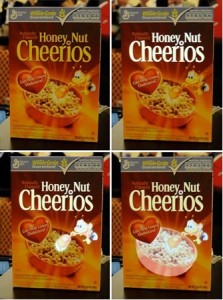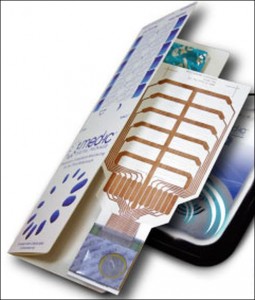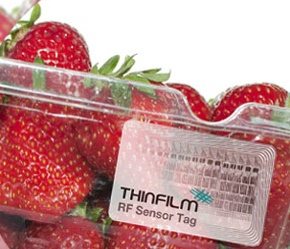The print industry is filled with characters, and Don Carli is certainly one of them! I met him several years ago at GRAPH EXPO and we ended up talking for a while about sustainability. I would estimate that he said something that either blew my mind or freaked me out several times during our initial conversation, and I am happy to report that trend continues to this day. I think of him as the Carl Sagan of print – an explorer, a teacher, a dreamer – and yes, he has what seems to be billions and billions of facts in his head that he is always willing to share.
I must admit that I don’t always get what Don is saying or his references, but every time we speak I learn something. He pushes me to understand the bigger pictures and minute particles that make up the industry, and when it comes to “future” it seems like Don is always ahead of it. He is chairing the upcoming GAAmericas Printed Electronics, Functional Printing & Intelligent Packaging Symposium, so I tracked him down to share some info with us about the event, and himself. Check it out, connect with Don, and follow him. Although you might find yourself saying WHOA more than usual, you will be a more knowledgeable person for doing so!
 DC: Who is Don Carli and what does he do?
DC: Who is Don Carli and what does he do?
DC: I founded Nima Hunter Inc., in 1986 to provide marketing research, business intelligence and strategy consultancy about digital media and communication technologies to major brands that include Adobe, Agfa, Dupont, Fujifilm, Hewlett Packard, Kodak, KonicaMinolta and Xerox. Nima also actively tracks markets, technologies and applications for Digital Imaging, Printed Electronics, Functional Printing, 3D Printing and Intelligent Packaging for major brands and investment funds.
Since 2004 I have also been Senior Research Fellow with the non-profit Institute for Sustainable Communication where I work with international brands such as IKEA, Unilever, National Geographic and others on the development of standards and best practices for the management of the environmental impacts of printed electronics and the sustainability of print and digital media supply chains.
I’m a curious person by nature, and I delight in solving problems. Whether it’s for business or pleasure I enjoy conducting research. I enjoy learning new things, visiting new places, trying new foods, reading speculative fiction, meeting new people and making connections. I don’t see life divided into work and everything else.
DC: Tell us a little about the upcoming GAAmericas Printed Electronics, Functional Printing & Intelligent Packaging Symposium and how you become involved.
DC: Perhaps that’s why I enjoy putting programs like this together. They give me an opportunity to conduct research on topics that are really quite complex and fascinating, to learn new things about technology and business, meet new people from different backgrounds who are much smarter than me, and make connections that matter.
This years symposium is the fourth in a series of printed electronics events that I have chaired for the GAA since 2006 when the field was very young. 
Because the technology was so young in 2006 very few people had done anything with printed electronics outside of a research laboratory. So I invited a science fiction author who I was a great fan of to give the key note… and he accepted my invitation! He gave a visionary keynote and it was a particular delight for me because I had always wanted to meet Bruce Sterling. He is one of the most imaginative techno-geek storytellers alive, and also someone who given a lot of thought to how printed electronics, smart objects (which he calls spimes) and Internet of Things are likely to evolve and and change our world.
This year the technology is moving from pilot project phase into large scale commercial rollouts. Freedonia Group predicts U.S. demand for active and intelligent packaging will grow 8% per year to $3.5 billion in 2017, well above total packaging demand growth and Xerox estimates that the global market for flexible, printed, and organic electronics for products, packaging and sensors is expected to reach $45 billion by 2016.
For that reason most of this year’s program will address different markets and applications where print electronics, functional printing and intelligent packaging have game changing commercial opportunities that can be pursued today and the program has been crafted to be of interest to product and packaging specialists as well as to senior executives responsible for strategy, business development, R&D and innovation at printing and packaging companies. This year I am excited to have been able to attract speakers from major consumer products brands like Molson Coors, Kodak and Osram Sylvania, as well and presenters from DarkCorner, a local craft distillery founded by a graduate of Clemson with a degree in electrical engineering, as well as promising startups like Electrozyme, SafeSense Technologes LLC, Tactonic Technologies and Local Motors.
DC: We had a chat about some of the potential applications for printed electronics such as medicine bottles alerting you through text/email/etc that it’s time to take your pill – which is pretty cool! Of course coming from the advertising world my thoughts immediately go to marketing applications. Is it too early for marketers to start thinking about opportunities for brands with printed electronics?
 DC: Actually, marketers have been thinking about the opportunities of printed electronics and the Internet of Things for a very long time. In fact the term “Internet of Things” was coined by an assistant brand manager at Procter & Gamble named Kevin Ashton back in 1999. What’s different and what’s changing very rapidly is the pervasive deployment of broadband infrastructure, cloud-based computing, smart phones, tables, wearable devices and social media technologies. Marketers now need to focus on assembling the value chain partners required to engage consumers, enhance the shopper experience and deliver tangible benefits to consumers, share owners and other stakeholders.
DC: Actually, marketers have been thinking about the opportunities of printed electronics and the Internet of Things for a very long time. In fact the term “Internet of Things” was coined by an assistant brand manager at Procter & Gamble named Kevin Ashton back in 1999. What’s different and what’s changing very rapidly is the pervasive deployment of broadband infrastructure, cloud-based computing, smart phones, tables, wearable devices and social media technologies. Marketers now need to focus on assembling the value chain partners required to engage consumers, enhance the shopper experience and deliver tangible benefits to consumers, share owners and other stakeholders.
DC: Regardless of how it is used, we are still talking about “printed” electronics being incorporated into printed materials – so somewhere a file is being created. What do packaging designers need to know, and can you share a few resources for ongoing information for them?
DC: Packaging designers have always needed to understand aesthetics and structure as an element of design… now they have to understand how printed 2D and 3D structures can imbue a package with functionality that allows it to sense and respond to its contents, its environment or a user. In turn, this may require them to develop a more extensive understanding of fields such as haptics. To the extent that the functions are electronic or digital, designers will need to understand, signal propagation, network connectivity and big data analytics.
There are a growing number of associations that can help packaging designers understand the markets, applications, technologies for printed electronics and intelligent packaging. These include The Active and Intelligent Packaging Industry Association (AIPIA), The FlexTechAlliance, The Electronics Manufacturing Initiative (iNEMI), The Association Connecting Electronics Industries (IPC), and The Organic Electronics Association (OE-A), all of which are supporters of The GAAmericas 4th Printed Electronics, Functional Printing & Intelligent Packaging Symposium.
DC: Following along the same logic, if there is a file and there is a printer, certainly a print buyer is in the mix! Who will be educating us on everything we need to know to properly purchase and manage projects incorporating printed electronics – including what the options are?
DC: Without doubt this will be a fertile area for consultants. However, I also expect that there will be dramatic growth in maker communities and collaborative innovation networks. That is why I’m excited to have Local Motors talking about their business model and their collaborative innovation platform at the symposium.
DC: You have always been a few steps ahead of pretty much everything since I have known you! Using that honed Don Carli intuition, fast forward five years from now and please describe the types of printed electronics we will see out there in the world.
 In five years I expect that printed electronic devices will be in widespread use to gather and transmit energy, printed electronic lighting will enter the mainstream, printed electronic touch surfaces will be commonplace, billions of people will wear printed electronic sensors every day, and tags, labels and packages incorporating printed electronics will be in common use in cold chain applications.
In five years I expect that printed electronic devices will be in widespread use to gather and transmit energy, printed electronic lighting will enter the mainstream, printed electronic touch surfaces will be commonplace, billions of people will wear printed electronic sensors every day, and tags, labels and packages incorporating printed electronics will be in common use in cold chain applications.











